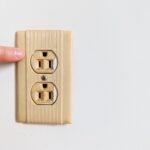Understanding digital multimeters for electrical work
Digital multimeters serve as fundamental tools for electrical professionals. These devices measure voltage, current, and resistance with precision. Most modern units display readings on LCD screens with 3.5 to 6.5 digit accuracy. Entry-level models cost around $50, while professional-grade meters and multimeters can reach $500 or more.
Professional electricians rely on these instruments daily for troubleshooting circuits. They check continuity in wires and test component functionality. Advanced models include features like temperature measurement and capacitance testing. Some units store up to 10,000 readings for later analysis.
Safety ratings distinguish quality multimeters from basic versions. CAT III rated devices handle up to 1000V in distribution circuits safely. CAT IV models work with overhead power lines up to 600V. Meters and multimeters (onninen.pl/en/products/Tools-and-OHS/Measuring-devices/Meters-and-multimeters) with proper ratings prevent electrical accidents during testing.
Specialized measuring devices for specific applications
Clamp meters measure current without breaking circuit connections. These tools open around conductors to read amperage flow. Digital versions provide accuracy within 2% of actual values. Professional models handle currents from 0.1A to 2000A effectively.
Insulation resistance testers evaluate wire and component integrity. They apply test voltages from 50V to 5000V depending on application requirements. Residential work typically uses 500V testing, while industrial applications need 1000V or higher. Results show insulation quality in megohms.
Power quality analyzers identify electrical system problems that basic meters miss. These sophisticated instruments detect harmonics, voltage sags, and frequency variations. They record data over days or weeks to identify intermittent issues. Commercial facilities use this information to prevent equipment failures.
Essential safety equipment for electrical testing
Personal protective equipment protects workers from electrical hazards during testing procedures. Arc-rated clothing provides protection from electrical flash incidents up to 40 cal/cm². Safety glasses with side shields prevent debris from entering eyes. Insulated gloves rated for specific voltage levels create barriers against shock.
Voltage testers confirm circuits are de-energized before work begins. Non-contact models detect live wires through insulation without physical contact. Contact testers require touching probe tips to conductors for verification. Both types should meet ANSI standards for electrical safety.
Lockout/tagout devices prevent accidental energization during maintenance work. These systems secure breakers in off positions while testing occurs. Workers attach personal locks that only they can remove. This tools and ohs (onninen.pl/en/products/Tools-and-OHS) practice prevents approximately 50,000 injuries annually according to OSHA statistics.
Maintenance and calibration best practices
Regular calibration ensures accurate measurements from testing equipment. Professional instruments need annual calibration to maintain accuracy specifications. Calibration certificates document traceability to national standards. Most manufacturers recommend recalibration every 12 months for critical applications.
Proper storage extends instrument life and maintains reliability. Temperature extremes damage sensitive electronic components inside meters. Humidity levels above 80% can cause internal corrosion over time. Protective cases shield instruments from physical damage during transport.
Battery maintenance keeps portable instruments ready for use when needed. Alkaline batteries provide 200-500 hours of operation in typical multimeters. Lithium cells last 50% longer but cost three times more initially. Replace batteries before they leak and damage internal circuits.





